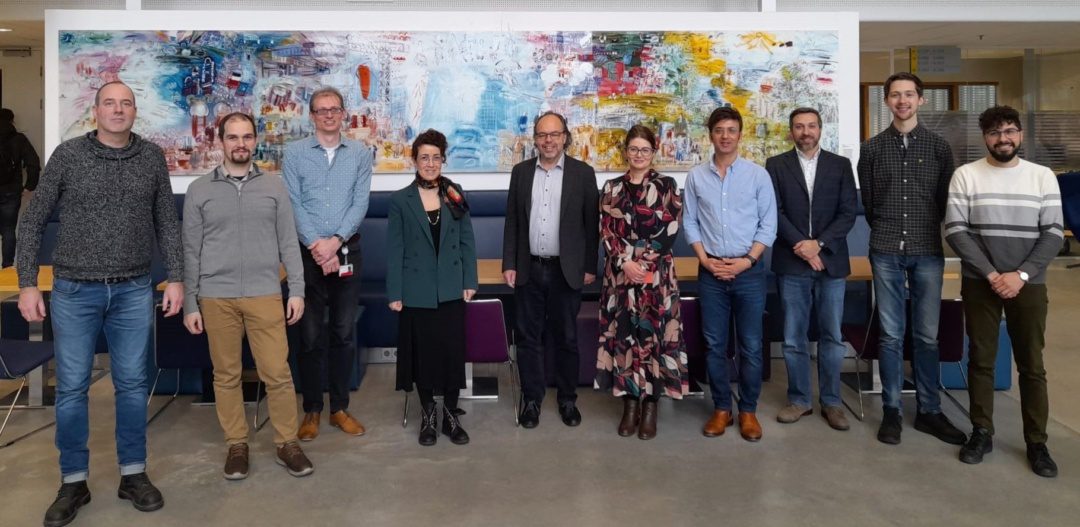The title of this article says it all.

Tesla's FSD Can Be Outdriven By Mercedes
Feb. 06, 2023 10:04 AM ET
Mercedes-Benz Group AG (MBGAF),
MBGYYBAMXF,
BMWYY,
BYMOF,
F,
GOOG,
GOOGL,
HYMLF,
HYMTF,
NVDA,
TM,
TOYOF,
TSLA,
VLVLY,
VOLAF,
VOLVF31 Comments4 Likes
Summary
- Tesla, Inc.’s Full Self-Driving capability is not really self-driving and unique.
- Mercedes-Benz Group AG’s Drive Pilot is much more advanced than the Tesla’s version.
- Mercedes’ valuation is attractive given its technologic advancements and financials.
- Main risk to Mercedes is coming from the continued bear market.
RomanNerud/iStock Editorial via Getty Images
As my subscribers know, over the last months I have analyzed extensively electric vehicles ("EVs") to find opportunities that can bring money to me and my subscribers. So far, it has gone well. We managed to short a couple of names and get juicy profits. The more analysis I do, the clearer it is getting to me. The race is not about electric vehicles, it is about self-driving technology. Tesla, Inc. (
TSLA) is considered the king in the industry because its Artificial Intelligence ("AI") and Full Self-Driving Capability (“FSD”) are perceived as the best ones. If and when Tesla manages to sell FSD as a service to other car makers, its revenue and gross margins will be completely different.
And it’s not just Tesla that considers Full-Self Driving a gold mine. Among the many companies working on autopilot are BMW (
OTCPK:BAMXF), Volvo (
OTCPK:VOLAF), Google (
GOOG), and even Toyota (
TM), which had been skeptical about autopilot back in 2015. Audi recently made aggressive moves into self-driving, and Audi A8, A6, and Q8 support autopilot function. In 2019, Hyundai (
OTCPK:HYMLF) invested in a self-driving startup Aurora, but that technology hasn’t made its way to public release yet.
One of Tesla’s main rivals in the self-driving field is Mercedes-Benz Group AG (
OTCPK:MBGAF,
OTCPK:MBGYY). It has achieved a level 3 of driving autonomy, while Tesla has reached only level 2. We give a detailed look at Mercedes and believe that the market underappreciates its story.
Level 5, level 3, level 2— what does it all mean?
To understand what Tesla’s and Mercedes' autopilots represent, it’s helpful first to understand the
National Highway Traffic Safety Administration’s admittedly wonky, five-level classification system for vehicle automation.
The early levels are familiar in our lives. They help us park, warn us of obstacles, and play the role of an executive officer while we are still captains of the ship.
Levels 2 and 3 are a big leap in technology development. So far, you’re still the driver and responsible for what is happening on the road, but most of the control can be entrusted to the car. At level 2, a vehicle can drive itself, but you need to be on constant alert and have both hands on the wheel. The car can still be confused by a traffic situation and give you control at any moment. At level 3, a car drives itself, and you can relax a bit. You can even take your hands off of the wheel in some areas. But the most important thing is that the car will alert you 10 seconds before you need to take over control. So you won’t have a panic attack when you suddenly need to gain control over the vehicle. Of course, you still aren’t allowed to use your phone or laptop while driving, but you can use all media sources in the car. For example, you can watch movies on the screen embedded into the car. Why only there? Because you shouldn’t miss the alert when the car can’t cope with the situation without you.
Yes, you’re still the captain, even though the sailors are very smart.
If this sounds like science fiction, then just wait because we’ve come to the most exciting development. This is really something from science fiction. Let me introduce you to levels 4 and 5. From this time, the car is fully responsible for your comfort, safety, and transportation from point A to point B. Now the car, not you, is the key figure on the road. It adapts to weather conditions, controls the situation on the road, and doesn’t need a driver at all.
Unfortunately, levels 4 and 5 are still in development, so today, autopilot really means "assisted driving" and not "self-driving" since the driver still has to be alert and attentive at all times. It won’t be until level 4 or 5 fully autonomous cars hit the roads that the promise of Full Self-Driving will be a reality.
Ok, but how do car makers achieve a really self-driving car?
There are three types of sensing devices: RADAR/Ultrasonics, LIDAR, and camera. All approaches have their own advantages and disadvantages.
RADAR sensors use radio waves to find those same distances and make the same calculations. It’s like a cat who can see a moving target— even at night. But a problem appears when a person stands on the road. It becomes barely visible for RADAR. This means that it’s not very good at detecting pedestrians and stationary humans, and this is vital on the roads. It’s a very good sensor to increase safety, but it’s not ideal as a primary sensor.
An acronym of “Light Detection and Ranging,” a LiDAR sensor points a laser at objects in its field of view, measuring distance by the time it takes for the reflected light to return to the sensor. The LiDAR can’t detect lanes, but is able to detect humans reasonably well— but at a much higher cost.
The last approach is the camera system. This is the primary sensor (in conjunction with a front facing Radar) used in Tesla vehicles. A camera system is a wide angle camera equipped on the front or in a surround configuration on the car. Unlike RADAR or LIDAR, a camera sensing equipment is only as good as the software processing the inputs, a primary component of which is a Deep Neural Network.
I know that it sounds scary, but we describe it simply. I promise.
Deep Neural Networks, or DNNs for short, were thought of first as a way to perfectly simulate the human and animal nervous system where a neuron— a nerve cell— fires for an object to be ‘recognized.’ A brain’s reaction is fast enough, but our main problem is that our body can’t always react quickly to danger. That is, we may see or feel it, but we don’t have time to do anything about it. And now, imagine a perfect car that can act as quickly as it recognizes the object.
The first DNN was created by Google. It really worked, except for one thing: the energy and resources spent on it were unimaginable. The role of the knight in golden armor was played by Nvidia Corporation (
NVDA), which reduced costs by 150 times and became the market leader.
But how exactly does this technology function? Well, the human brain recognizes objects through its edges. It doesn’t see pixels; it sees edges. That’s why we are all afraid of the dark in childhood. In a dark, dark room, we can only see a dark, dark figure, and our brain doesn’t need anything else. This is enough for us to remember all the horror stories told around the campfire and how the dark, dark figure turned into a monster (although it was likely just a chair). In a word, our brain saw the edge, and then everything went like clockwork.
So a DNN tries to recreate how a human brain functions by programming it only to recognize edges. A ton of code is added, and then begins the unsupervised "Machine Learning" time period. In this, the DNN is given material, which is either images or videos, or data in any other form. Everything ends up in a very funny situation: several hundred engineers and highly qualified programmers somewhere in Silicon Valley circling ovals and squares so that in the future, what seems like science fiction to us now will one day become our reality.
One by one, the virtual neurons are created, unsupervised, and unprogrammed to recognize a specific edge. When enough time has passed, it can distinguish between whatever the DNN was told to look out for. The "intelligence" of this technology depends on its processing power and the time spent "learning." Admittedly, it’s kind of depressing if it takes three days and a billion operations to recognize (as Google did at first), and it’s an entirely different matter when everything happens in a fraction of a second. But now that we have learned all the subtleties of this technical miracle, let’s move on.
Enter Mercedes-Benz
Mercedes-Benz unveiled Drive Pilot, the world’s first level 3 driver assistance system approved by the German government,
powered by Nvidia. Drive Pilot uses an extensive suite of radar, LIDAR, ultrasonic, and video camera sensors.
Mercedes' presentation
On suitable highway sections and where traffic density is high, Drive Pilot can offer to take over, initially up to the legally permitted speed of 37 mph/60 kmh. This limit will be increased to 81 mph/130 kmh
next year. Though you can still only use level 3 in certain areas and under good weather conditions. The controls needed for this are located in the steering wheel rim, on the left and right, above the thumb recesses. When the driver activates Drive Pilot, the system controls the speed and distance and effortlessly guides the vehicle within its lane. The route profile, events occurring on the route, and traffic signs are considered. The system also reacts to unexpected traffic situations and handles them independently.
This autopilot system can also be operated in level 2 mode when all of the conditions aren’t met, such as highway speed.
So features such as lane keeping and emergency braking are still available, but with the driver required to be ready to take control.
Of course, the cooperation of Mercedes with Nvidia played a very strong hand in Drive Pilot’s creation, as I have already mentioned that it was Nvidia who became the leader in the market of artificial intelligence. And what’s more, powering Drive Pilot is Nvidia's Orin system-on-chip, which eclipses Tesla’s performance and is in production now.
It is much higher than current Tesla's Level 2 despite promises of Elon Musk to reach Level 5 by the year's end, it is not possible.
Mercedes financials
Financial reports. Author's analysis
Mercedes has been focusing on high-margin products lately and reducing its product range. This strategic shift has paid off for the company as it has seen an improvement in its financial performance. The gross margin, which measures the profit a company makes from its sales, has increased from 15% to 22%. In addition to the improvement in gross margin, Mercedes has also optimized its operating expenses (Opex). This has increased EBIT. Unleveraged Cash Flow over the last 12 months achieved over $25 billion. An astonishing amount. In 2021 it was below 10 billion dollars. The positive cash flow generated by these improvements has allowed the company to invest in the transition to electric vehicles.
Valuation
Car makers' stocks have been extremely volatile recently. Initially, Tesla's stock plunged and provided a substantial investment opportunity one month ago. But its share price bounced off exceptionally quickly. At the current levels, Tesla is again priced extremely high; its EV/ 2024 Sales is again at 4.5x, compared with 2.6x just recently. Mercedes's stock has been on the ride since November last year, and its current share price of $78 results in an $83 billion market cap with EV/ 2024 Sales multiple of about 0.4x. It is comparable with other established players as Ford and General Motors.
Nobody expects that Mercedes will accelerate its revenue as Tesla will. But I believe the market still underappreciates the potential boost from Mercedes' self-driving platform. Otherwise, it should be more expensive than Ford, struggling with its EV transition.
Risks
The main risks come from very high competitive pressure and recession fears. Although EV sales did not decrease during Covid-19, almost all of Mercedes' revenue is generated by combustion engine cars that were severely hit during the Covid-induced recession. Therefore, if the economy deteriorates, Mercedes' earnings will decrease, leading to lower cash flow generation that is required to finance the transition to electric vehicles.
Additional risks are coming from potential technological challenges. The market can much better appreciate Tesla's AI-centered approach given an emerging AL hype. Tesla was one of the first to integrate cameras around its vehicle as standard equipment, allowing the car to see 360 degrees and up to 250 meters away. Tesla has also integrated powerful AI computing into its cars that enable the vehicle to process camera images faster than ever possible, making other sensors such as radar and ultrasonic sensors redundant, if not confusing, for the system to process. This has shocked many in the industry who feel quite the opposite and believe that more sensors such as LiDAR are needed, not fewer. It also raises the question of how autopilot will handle low visibility situations such as in the evening, dark, or foggy situations where the radar still functions. Tesla’s website previously proclaimed that its radar “Passes through fog, dust, rain, snow and under cars” and that “Radar plays an essential role in detecting and responding to forward objects,” something owners who drive in less-than-ideal conditions may now need to worry about.
Starting in mid-2021, Tesla no longer equipped vehicles with radar sensors and relied solely on cameras for autopilot and Full Self-Driving capabilities. It does so because it believes that its Deep Neural Network can be so well trained that it will recognize any needed objects without the help of radars and LiDARs.
Conclusion
Mercedes-Benz Group AG is exceptionally well-positioned for an emerging self-driving race, and despite a recent share price surge, there is still a lot of potential for investors. To buy Mercedes-Benz Group AG stock now or to wait depends on your recession probabilities. When macro uncertainty is so high as it is now, a deep, slow scaling into Mercedes-Benz Group AG stock can be a reasonable strategy.
Meanwhile, keep riding the cycle.
Editor's Note: This article discusses one or more securities that do not trade on a major U.S. exchange. Please be aware of the risks associated with these stocks.
This article was written by
 Georgy Shishkov
Georgy Shishkov
621 Followers
Follow
Welcome to my page! My name is George and I am passionate about analyzing stocks. My seven years of experience in investment banking and the CFA II exam allow me to provide a fresh perspective to subscribers. My research is focused on opportunities in the Energy and EV space and I love using those findings to challenge extremely optimistic business assumptions and forecasts frequently presented by the management. I also believe that you need to follow cycles to earn in the markets. I focus a lot on the macro-environment in my research. My Master's Degree in Mathematical Methods in Economics equipped me well for diligent analysis. Feel free to enjoy my articles. I'm sure they will help you get less stressed and earn more in the markets.
Show more
Show More
Disclosure: I/we have no stock, option or similar derivative position in any of the companies mentioned, but may initiate a beneficial Short position through short-selling of the stock, or purchase of put options or similar derivatives in TSLA over the next 72 hours. I wrote this article myself, and it expresses my own opinions. I am not receiving compensation for it (other than from Seeking Alpha). I have no business relationship with any company whose stock is mentioned in this article.
Tesla’s Full Self-Driving capability is not really self-driving and unique. Mercedes-Benz Group AG’s Drive Pilot is much more advanced. Click for more on MBGAF.

seekingalpha.com










